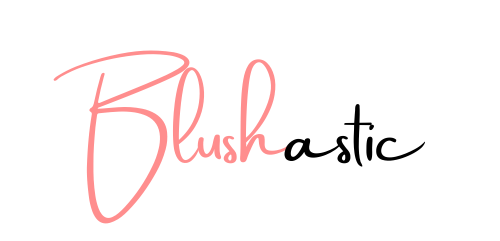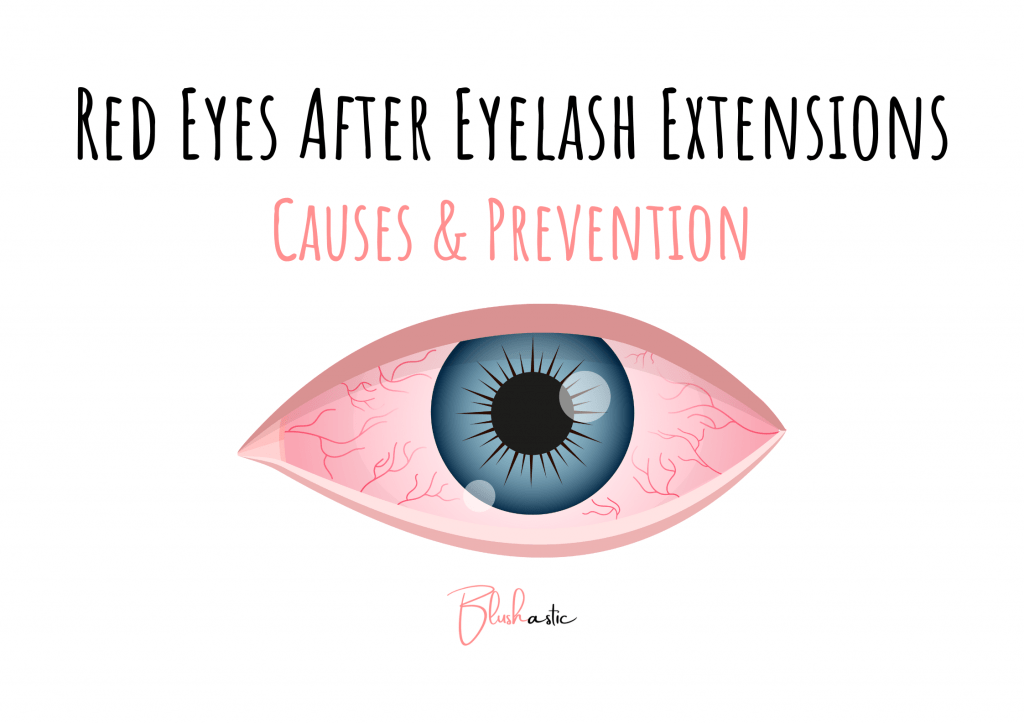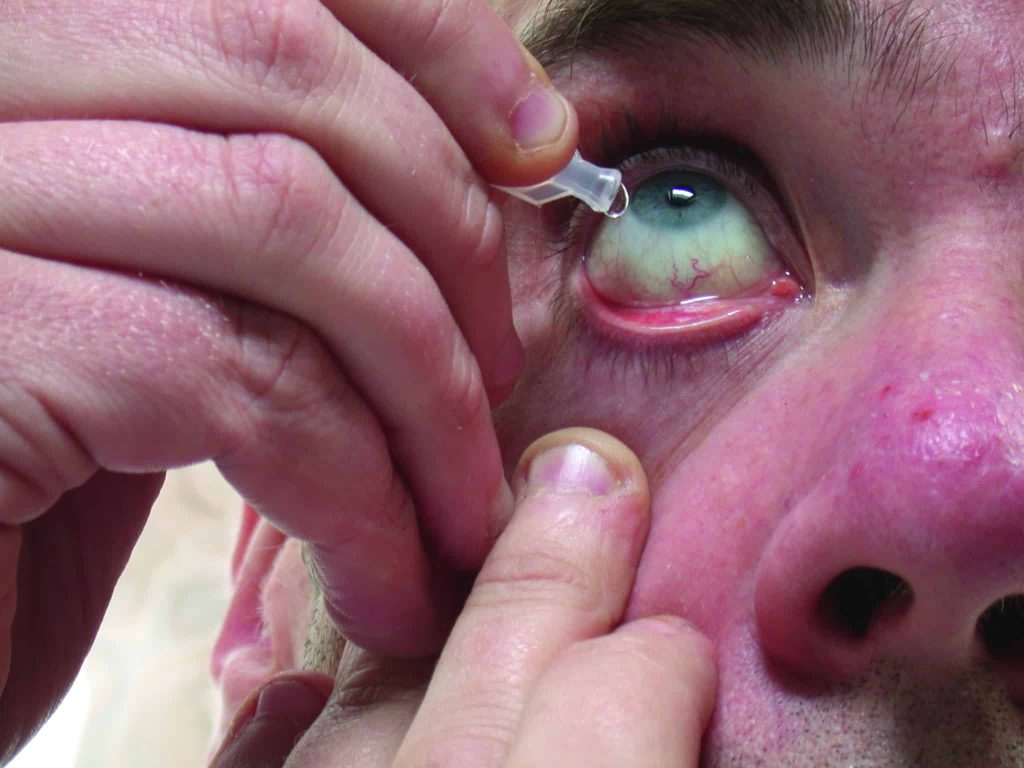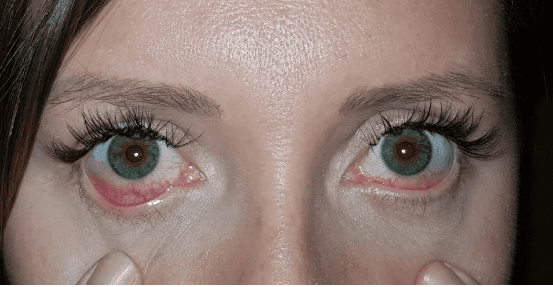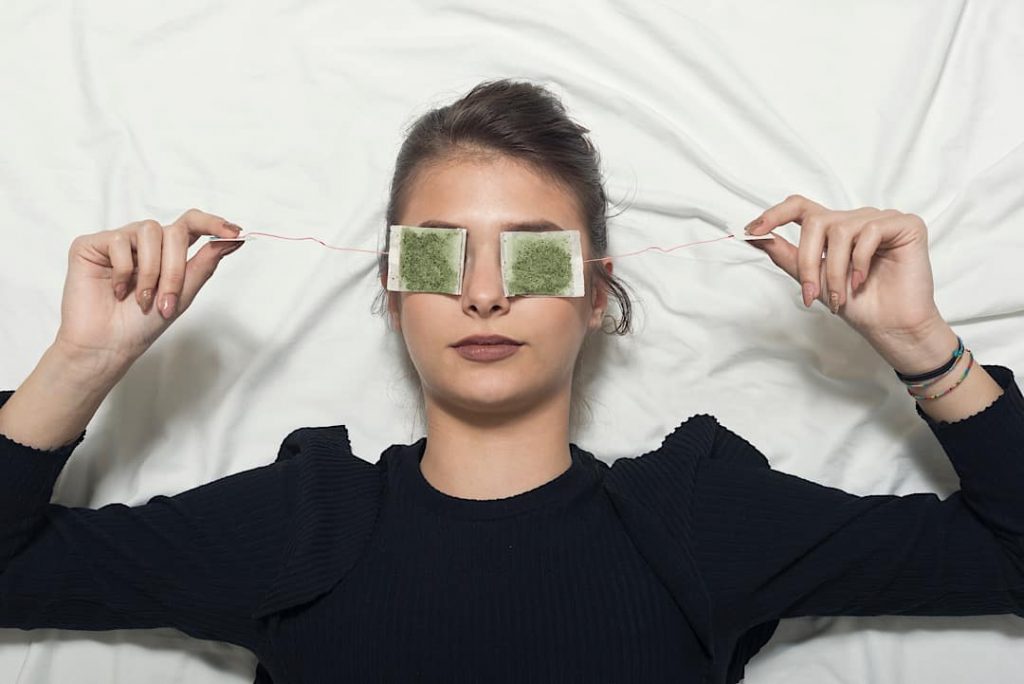Fluttery long lashes that look like butterfly wings, delicately accentuating a woman’s eyes, are considered a beauty staple in many cultures. And achieving them may be a dream for many women, so eyelash extensions have grown in popularity worldwide. However, what advertising outlets and social media influencers do not tell you are all the minor and significant side effects it may cause. Red eyes after eyelash extension are one such side effect of having extensions, which can mean different things in different situations, so it is best to learn about them thoroughly.
Contents
Red Eyes After Eyelash Extensions | What Is An Eyelash Extension?
Eyelash extensions are a cosmetic procedure that entails individually attaching synthetic, silk, or mink extensions to each individual lash. Its ability to be highly customized to meet your unique needs for length, volume, and color has helped the technique gain enormous popularity. It also looks natural and lasts longer than real eyelashes.
Also, you can enjoy them for up to 6 to 8 weeks with the proper upkeep and care. Some general aftercare guidelines for care and maintenance include avoiding water or steam for the following 24 hours and avoiding applying oils or serums to your lash line because you run the risk of causing the glue to break down.
Side Effects Of Eyelash Extensions
Dealing with eyelash extensions exposes one to synthetic materials and chemical-filled adhesives. And since the Food and Drug Administration (FDA) does not oversee lash adhesives and extensions, as well as the fact that several individuals are often not aware of their chemical and material intolerances, which could result in infections and allergies.
- Allergic reactions: If any of the synthetic materials or chemicals used in the procedure are allergens for you, this could occur.
- Infections: They might develop as a result of dirty eyelashes that may include unwanted elements, including dust, dirt, dead skin cells, pollen, etc. can result in flaking, swelling, or redness.
- Chemical Burn: If adhesives leak into the eye, this can occur.
- Inflammation: Scratching the eyes might cause strands from the extension to be wedged there.
(The information regarding side effects has been inspired by the articles on the topic from two health information sites, Healthline and WebMD, and the articles’ links are https://www.healthline.com/health/eyelash-extension-side-effects#treatment and https://www.webmd.com/eye-health/eyes-eyelash-extension-safety)
Ocular adverse effects
As previously stated, several side effects can be experienced after receiving eyelash extensions. Among the symptoms are itchiness, redness, and swollen eyelids. With the unceasing rise in cosmetic augmentations and enhancements of the eyes and the surrounding area, it is crucial to understand those reactions, as failure to manage them might result in some significant ocular illnesses. We have attempted to cover them below.
- Blepharitis: This condition is responsible for 79% of post-treatment complications. It is a pretty typical condition that causes inflammation of the eyelids. Bacterial development in the lash line causes anterior blepharitis, whereas clogged oil glands cause posterior blepharitis. A primary contributor to chronic dry eye illness, blepharitis can produce red, swollen eyelids, crusting eyelashes, flaking, itching, stuck-together eyelids, photosensitivity, tingling sensations, and, in rare cases, hazy vision.
- Keratoconjunctivitis: Conjunctival and superficial corneal irritation. Since chemicals migrate onto the ocular surface, eyelash extensions may induce keratoconjunctivitis. The formaldehyde in the adhesive can get into someone’s eyes immediately or hours after the procedure, either by washing one’s face or vaporizing due to body heat and humidity.
- Conjunctival Erosion: This can manifest in the form of redness, pain, tendering, and foreign body sensation. The straining of the eyes as a result of the eyelid fastening tapes and a less-than-gentle approach is a critical contributor.
- Contact Dermatitis: A rash brought on by coming into contact with an allergen. The main warning signs of this are itchy, blistering, dry, and cracked skin, and they can be seen hours or days after the treatment.
- Bacterial Keratitis: Corneal infection brought on by bacteria, primarily staphylococcus aureus and pseudomonas aeruginosa. Contact lens wearers generally experience this, while it might occasionally occur regardless.
- Subconjunctival Haemhorrage: Occurs when a blood clot forms under the eye’s surface because a small blood vessel breaks, collecting the blood since the conjunctiva cannot immediately absorb it. The leading cause of this is also mechanical stress from eyelash tapes.
(Above mentioned information is taken from a review article published under the National Library of Medicine which reviews all the articles and case reports in English from May 1934 to December 2017. The review is called “Eyelid Cosmetic Enhancements and Their Associated Ocular Adverse Effects,.”
Some other research papers discussing specific ocular diseases are
Red Eyes After Eyelash Extensions | What Are Bloodshot Eyes?
Bloodshot, inflamed eyes are generally referred to as having red eyes. The sclera, or white of the eyes, appears red when these symptoms develop. This redness develops due to the enlargement and inflammation of the blood vessels just beneath the surface of your eye. In most cases, this occurs when you come into contact with an allergen.
What May Cause Red Eyes After Eyelash Extensions?
Red eyes are one of those symptoms that appear in a multitude of scenarios ranging from a minor cold to severe ocular problems. This makes determining the precise reason for it to take the appropriate treatment measures extremely vital, particularly in the event of a cosmetic procedure. In order to assist you with the same, we have mentioned some typical causes.
Allergic Reaction
Eyelash extensions are generally made of synthetic fibers or silk and mink. Latex, cellulose gum, cyanoacrylates, benzoic acid, and formaldehyde are frequently used in extension glues, and geraniol, propylene glycol, and formaldehyde are frequently used in extension removers. If any substances being used irritates you, an allergic reaction could occur, with varying degrees of severity. Many people don’t understand the value of cleaning eyelash extensions properly. This is one of the main reasons dirt gets trapped and causes allergies.
These allergies may manifest as watery eyes, pain, itching, and swelling. The most prominent symptom of an allergic reaction, also known as contact dermatitis, as we previously saw, is likely eye swelling, which typically worsens in the hours or days following the treatment. In this situation, you should take immediate action by taking the extensions off and going to the doctor.
Chemical Burn
Chemical burns can cause dryness, discomfort, and red, bloodshot eyes. The adhesives used frequently contain cyanoacrylate, and cyanoacrylate-based adhesives emit formaldehyde, a toxic allergen for most people, as a residue. Also, as the adhesives cure, our moisture is drawn out, which dries out the eyes. Another possible cause is lash adhesive trickling into the eye.
This can sting, but it won’t be accompanied by swelling as it would be with allergies. This should remind you of the keratoconjunctivitis that we discussed earlier. However, any chemical burns can be easily treated by preserving moisture with ocular lubricants and usually heal within a few hours or days of the procedure.
Poor Application Technique
Finding yourself a competent and reputable lash technician is crucial to achieving optimal results that do not jeopardize your health. Tweezers jabbing in the eyes, improper positioning of gel pads that become wedged in the eyes or, in some cases, defective pads that fail to keep the eyes shut during the procedure, medical tapes touching the waterline, substandard lash extension materials, and fibers from the lash extension irritating your eyes and causing corneal abrasions are examples of poor techniques that are frequently observed.
As we have seen before, conjunctival erosion and subconjunctival hemorrhage may occur if the fastening tapes are not placed appropriately and gently. Your eyes will momentarily become irritated and red as a result of any improper technique.
Poor Hygiene
Finding a good lash technician is crucial and is reiterated here as hygiene is generally compromised at unlicensed places; one should not be getting their lash done. Our exposure to foreign germs like bacteria could potentially have damaging results from the lack of disinfection and sterilization of equipment. This could result in the previously observed anterior blepharitis or, in some rare cases, bacterial keratitis, manifesting as inflamed eyes with swollen, sticky, and flaking eyelashes.
Subpar Aftercare
Any irritation generally subsides if proper aftercare is followed, but minor inconveniences only turn into major ocular problems and will necessitate a trip to an ophthalmologist if the upkeep is substandard.
Sensitive Eyes
In general, it is suggested against having any eye cosmetic procedures done on sensitive eyes or eyes with acute or chronic disorders, such as dry eyes. Nonetheless, if they decide to do so, necessary treatment must follow.
Contact Lens Acute Red Eye (CLARE)
This condition, which refers to itching and bloodshot eyes that may persist for a few hours or days after the process if contact lenses were worn during it, is rather self-explanatory. However, Contact lens wearers must remove them prior to the procedure and must take extra precautions thereafter since they run the risk of developing bacterial keratitis.
How To Treat Bloodshot Eyes?
Although bloodshot eyes may be indicative of a plethora of issues that need attention and care, in most circumstances, you shouldn’t let bloodshot eyes hinder your enthusiasm for acquiring lovely, fluttery eyelashes. In the majority of cases, the remedies indicated below can help, but keep in mind that it is recommended to see a doctor if your symptoms do not improve with time.
Warm Compress
Warm compresses are a godsend for dry eyes because they typically activate and detoxify the oil glands, promote oil production, and prevent eye moisture loss. Moreover, it aids with sleep and improves circulation. Moist and dry warm compresses are the two primary types of warm compresses that people use.
If you want to attempt a moist, warm compress, follow these steps.
- Wash your hands to disinfect them.
- Pour a bowl with hot water; it should be at a temperature that is comfortable for you.
- Squeeze extra water from a clean cloth after dipping it in water.
- Apply with light pressure on the eyes while lying down, or whichever is most comfortable for you.
- Every day, spend five to twenty minutes doing this.
However, if you think that might be a hassle, a dry, warm compress would work just as fine. Follow these to attempt.
- Wash your hands to disinfect them.
- Uncooked rice should be placed in a clean sock, which should be tied in a knot to prevent spillage.
- Microwave the sock for short periods until it is warm, which usually takes less than a minute.
- With light pressure, apply to the eyes.
- If necessary, repeat using a fresh pair of socks.
Cold Compress
Those with problems in their vision owing to burning or unpleasant sensations can choose cold compresses, which lower heat from itchy or irritated eyes. You may make a cold compress for yourself. Use caution while applying a cold compress as usage for an extended period of time since it can lead to frostbite on your eyelids.
- To disinfect hands, wash them.
- A clean cloth can be used in unison with a plastic bag of rice or just by itself.
- Wet the fabric with cold water, then squeeze out the extra.
- Apply the compress to the eyes using light pressure.
- Apply for 5-20 minutes.
Eye Drops
Over-the-counter, lubricating eyedrops can help alleviate any moisture losses to relieve dry, irritated eyes. In case of any allergic reactions, suitable eye drops to relieve those are also available. However, eye drops should be followed based on a prescription, so visit a doctor to determine dosage and usage duration to avoid further complications.
Oral Antihistamine
Histamines are produced by the body when it comes into contact with an allergen. Antihistamines decrease or inhibit histamine production in order to treat allergy symptoms. If cold and warm compresses are ineffective at relieving your eyes’ itching, you should consider taking oral antihistamines. But, to prevent overdose, do obtain a prescription for the same. After using oral antihistamines for a few days, if the symptoms do not improve, have the extensions removed and seek immediate medical attention.
Tea Bags
Due to the caffeine, antioxidant, and tannin content of tea bags having a beneficial soothing impact on inflamed and irritated eyes, using tea bags on the eyes has become a fairly common home remedy. Tannin also has the capacity to draw out fluids to reduce any puffiness. Furthermore, we must not overlook their accessibility and affordability. The most widely used herbal teas include rooibos, chamomile, lavender, calendula, comfrey, fennel, and fenugreek.
It can be used by following these easy instructions.
- As if you were about to drink tea, brew two tea bags.
- The extra liquid should then be wrung out.
- Allow them to cool normally or place them in a refrigerator for 10-15 minutes.
- By carefully massaging the region around your eyes, apply for 15 to 30 minutes.
Witch Hazel
Witch hazel can be used to reduce swelling and irritation in the eyes because of its anti-inflammatory and astringent qualities. Using them involves soaking cotton pads, putting them on the eyelids, and then removing them after 15 to 20 minutes.
When to seek professional help?
As we’ve already discussed, receiving a medical consultation in order to receive the proper dosage for your safety is necessary while using pharmaceutical medications to treat allergy or irritation symptoms in your eyes. But it’s vital to stress that any symptoms that last longer than a day or two should be examined, especially if they worsen over time. In cases of more severe discomfort, remove the eyelash extensions before seeing a doctor. A doctor should be consulted in order to pinpoint the actual reason for your condition and the best course of action for you because taking the wrong medication will only have ineffectual results.
Things to remember on an appointment to minimize potential side effects
You can take specific precautions to guarantee your safety and integrity while receiving cosmetic procedures like eyelash extensions. A handful of these tenets of wisdom are listed below.
- Find a good lash technician: Putting lash extensions on your own is never recommended; instead, seek out a licensed aesthetician. To form opinions regarding their application and hygiene methods, conduct in-depth research, read reviews, and you can even pay them a visit. As soon as you settle on one, read any FAQs or informational booklets the technician provides.
- Choose the lash length wisely: A breeding ground for microorganisms will be created by eyelashes that are longer than necessary. If you wear glasses, they may also continually bump into your lenses and be a bother. Choose a length that meets your goals for beauty while being simple to maintain.
- Keep the eyes shut: Since their natural shape does not close correctly, people with round eyes are often more likely to have glue in their eyes. In any case, you need to be sure to close them completely and as much as you can, but without pressing too hard. Avoid chatting as well because doing so could cause your eyes to open instinctively and deter the lash technician from doing the same.
- Gentle treatment: When yanked or pulled, eyelash extensions can potentially cause thinning or breaking. Not only for the 24-hour aftercare period but also for the duration of wearing extensions, gentle handling of eyelashes is essential.
(Some general FDA guidelines to practice safety and precautions while getting any eye cosmetic procedure: https://www.fda.gov/cosmetics/cosmetic-products/eye-cosmetic-safety)
Takeaway
As beauty treatments become increasingly popular, we must understand that there should be a balance between looking our best and avoiding potential risks. Our best lines of defense against the dangers of aesthetic procedures are reasoned thought and knowledge. Using a good quality eyelash glue for extensions, cleaning them properly, and taking care of steps mentioned above can contribute a lot.
While you endeavor to accomplish your beauty objectives, we wish you a safe and pleasurable experience. Thanks for reading! We believe that staying informed means you are taking the right steps to ensure a positive and safe experience with beauty treatments.
Marilyn’s deep interest in fashion, beauty, and lifestyle has led her to pursue a fulfilling career as a freelance writer and blogger. With her bachelor’s degree in fashion design from the Fashion Institute of Technology, she has developed a keen eye for style and trends, making her well-equipped to offer valuable insights into the latest fashion and beauty trends.
